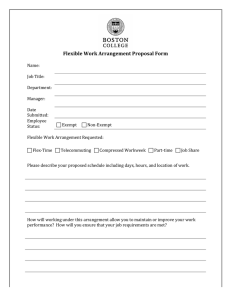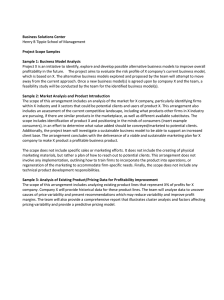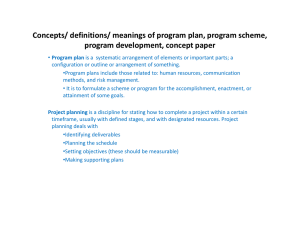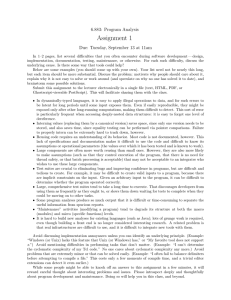Exercises 1
advertisement
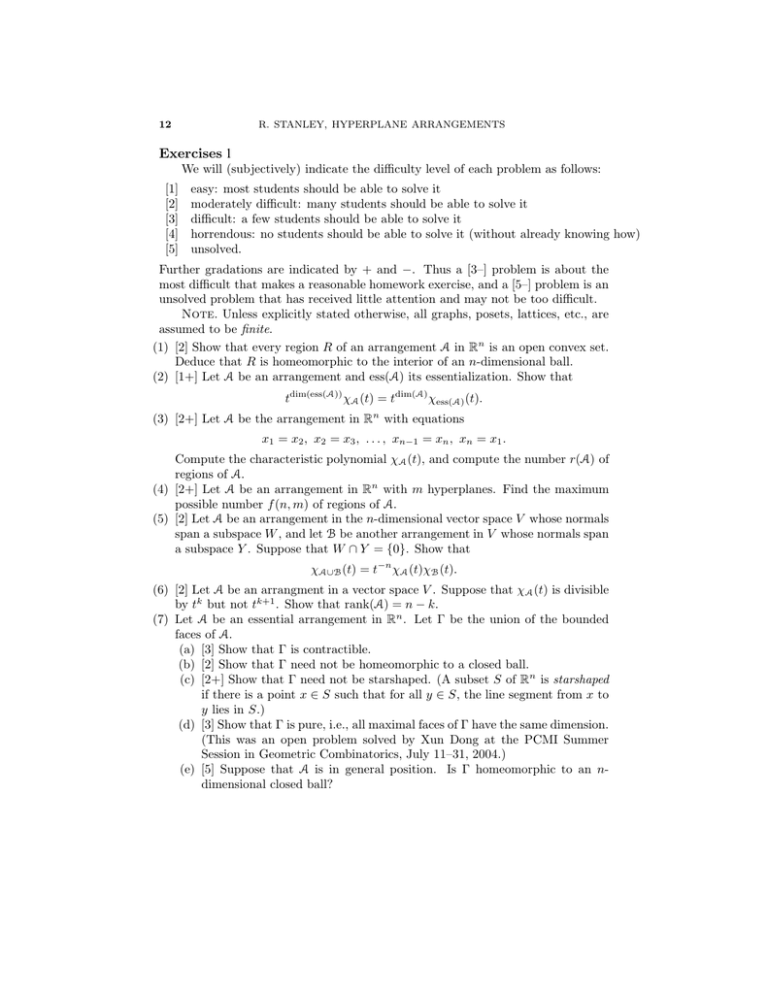
12
R. STANLEY, HYPERPLANE ARRANGEMENTS
Exercises 1
We will (subjectively) indicate the difficulty level of each problem as follows:
[1]
[2]
[3]
[4]
[5]
easy: most students should be able to solve it
moderately difficult: many students should be able to solve it
difficult: a few students should be able to solve it
horrendous: no students should be able to solve it (without already knowing how)
unsolved.
Further gradations are indicated by + and −. Thus a [3–] problem is about the
most difficult that makes a reasonable homework exercise, and a [5–] problem is an
unsolved problem that has received little attention and may not be too difficult.
Note. Unless explicitly stated otherwise, all graphs, posets, lattices, etc., are
assumed to be finite.
(1) [2] Show that every region R of an arrangement A in Rn is an open convex set.
Deduce that R is homeomorphic to the interior of an n-dimensional ball.
(2) [1+] Let A be an arrangement and ess(A) its essentialization. Show that
tdim(ess(A)) ψA (t) = tdim(A) ψess(A) (t).
(3) [2+] Let A be the arrangement in Rn with equations
x1 = x2 , x2 = x3 , . . . , xn−1 = xn , xn = x1 .
Compute the characteristic polynomial ψA (t), and compute the number r(A) of
regions of A.
(4) [2+] Let A be an arrangement in Rn with m hyperplanes. Find the maximum
possible number f (n, m) of regions of A.
(5) [2] Let A be an arrangement in the n-dimensional vector space V whose normals
span a subspace W , and let B be another arrangement in V whose normals span
a subspace Y . Suppose that W ⊕ Y = {0}. Show that
ψA�B (t) = t−n ψA (t)ψB (t).
(6) [2] Let A be an arrangment in a vector space V . Suppose that ψA (t) is divisible
by tk but not tk+1 . Show that rank(A) = n − k.
(7) Let A be an essential arrangement in Rn . Let � be the union of the bounded
faces of A.
(a) [3] Show that � is contractible.
(b) [2] Show that � need not be homeomorphic to a closed ball.
(c) [2+] Show that � need not be starshaped. (A subset S of Rn is starshaped
if there is a point x ≤ S such that for all y ≤ S, the line segment from x to
y lies in S.)
(d) [3] Show that � is pure, i.e., all maximal faces of � have the same dimension.
(This was an open problem solved by Xun Dong at the PCMI Summer
Session in Geometric Combinatorics, July 11–31, 2004.)
(e) [5] Suppose that A is in general position. Is � homeomorphic to an ndimensional closed ball?
